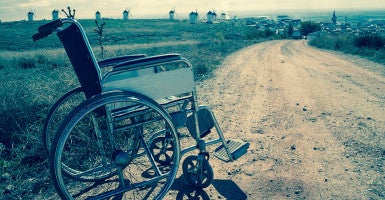Over the past 10 years, in spite of massive and growing funding of America’s anti-poverty agenda, the percentage of individuals able to support themselves free of government welfare has declined. The fundamental reason the nation has failed to effectively reduce dependency and promote self-sufficiency is that we’ve been misdiagnosing poverty.
People experience poverty for varied reasons. Remedies for poverty should take this diversity into account. Through my experience with the Center for Neighborhood Enterprise and the nearly 3,000 community groups working in low-income neighborhoods it has served, I have come to understand that there are typically four basic categories of the poor.
>>> Check out The Heritage Foundation’s Index of Culture and Opportunity
There is one cohort whose poverty is the result of an unexpected setback, such as the death of a breadwinner or the loss of a job. For these people, the welfare system can function as originally intended, providing temporary support until recipients can find their footing again.
A second cohort comprises those who have remained dependent on the system because the disincentives to marry and work embedded in its regulations make it a rational choice to avoid those stepping stones to self-sufficiency. They have “done the math” and calculated that it is not worth the loss of benefits to take the first steps toward upward mobility.
The third group is made up of the disabled, many of whom will always be in need of some support.
The fourth cohort consists of those in poverty because of the choices they make and the chances they take—for example, those suffering from alcoholism and other addictions, who choose to live with the consequences rather than pursue recovery.
It is that fourth category of the poor whose choices impose avoidable costs on the larger society. Those who engage in self-destructive and predatory behavior make poor decisions that often lead to emergency room treatment, police dispatches, and incarceration. No amount of income distribution, safety nets, or programs will make a substantial or sustainable difference in their status.
Among this cohort, a fundamental revitalization in vision, character, and values is a prerequisite for them to reclaim their lives and escape from dependence on government aid. This internal transformation can be—and has been—uniquely engendered by community-based (often faith-inspired) outreach by neighborhood leaders throughout the country.
These healing agents exhibit common characteristics. They share the same geographic and cultural ZIP codes with the people they serve, they have a firsthand understanding of the challenges faced by those they serve, and they are available on a 24/7 basis for the long haul. It is not uncommon for these grassroots leaders to be involved in a person’s life from childhood to adulthood.
I have witnessed the dramatic transformations that have resulted from the work of these selfless grassroots leaders. Once an internal transformation has been accomplished, these men and women, who had virtually lost their lives to drugs and alcohol, emerge as responsible employees, spouses, and parents.
I have seen fatherless youths who were raised on the streets and were drawn to the lures of gang violence and drug trafficking—exactly those youths who data predicts will give rise to a second generation with the same dismal futures—instead become agents of peace and renewal in their communities and loving fathers to their children, because of a surrogate father figure’s mentorship.
I have known men released from prison, with the mark of a felon and no job prospects, become successful businessmen and entrepreneurs who provide employment to others in the community.
To harness fully the power of America’s transformative neighborhood healers requires a new paradigm for identifying the “experts” who deserve recognition, trust, and support. Their authority comes not from diplomas and certificates on their walls, but instead from the testimonies of the men, women, and youths whose lives they have touched.
Policymakers should cease relying on sociologists’ “failure studies” that document neighborhoods’ deficits as the primary way to describe the conditions of the poor. Those living in poverty should be identified not in terms of their liabilities and disabilities, but rather by their strengths and latent abilities. Such “capacity studies” can identify the coping strategies of those who have achieved against great odds.
The right diagnosis would give Americans greater insight on how to bend the self-sufficiency curve in the right direction.
Originally published in the Bradenton Herald.































